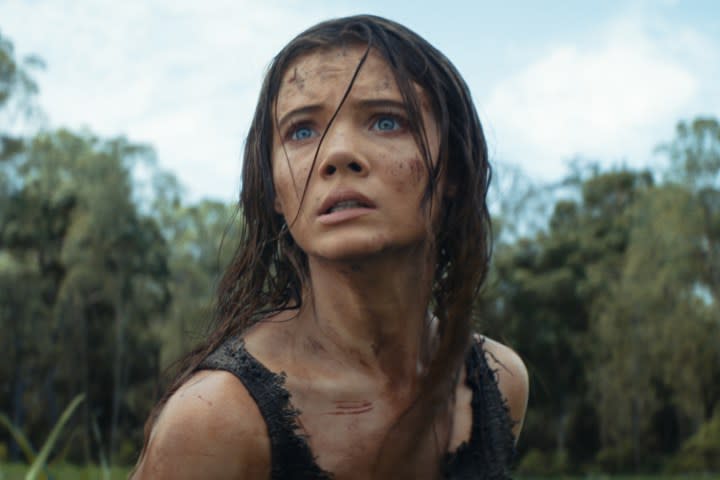The 2017 film War for the Planet of the Apes is known for ending with the death of Caesar (Andy Serkis). Its highly anticipated follow-up, Kingdom of the Planet of the Apes, begins with Caesar’s funeral before jumping forward in time “many generations later.”
For much of the movie, Caesar’s absence is strongly felt. Viewers soon find out that, after his death, the apes who came after him have split into different clans — some of which are more peaceful and isolated than others. His teachings have mostly been forgotten or twisted by power-hungry leaders like Proximus Caesar (Kevin Durand).
How is the life after Caesar?
The film introduces a worthy successor to Caesar in Noa (Owen Teague), a young chimpanzee eager to prove himself. When Proximus’ ape followers attack his peaceful village one night, they kill his father in front of him and capture the other members of his clan.
Noa sets off to find his surviving family and friends and bring them back home. Along the way, he learns more about Caesar’s teachings and leadership from Raka (Peter Macon), a wise orangutan. He also forms an unexpected partnership with Mae (Freya Allan), a clever human who knows how to get into a vault that Proximus wants to break into.
Raka tragically dies when Noa and Mae are captured by Proximus’ apes. Noa, however, refuses to give up on his mission and ignores the warnings of his clan members, whom he reunites with at Proximus’ coastal kingdom. He, Mae, and his two closest friends, Soona (Lydia Peckham) and Anaya (Travis Jeffery), secretly plant explosives along the dam-like wall that protects the entrance to Proximus’ man-made vault from the Pacific Ocean’s waves.

The four then climb to a hidden, cliffside entrance that leads straight into the vault. Once inside, Mae secures a hard drive with information that could help humans communicate with each other again.
The beginning of a new war
The group’s plan is briefly stopped when they open the vault’s doors and find Proximus already waiting for them on the other side, holding Noa’s mother hostage. Mae, trying to keep the vault’s human weapons away from Proximus, ignores Noa’s pleas to wait until his mother and friends are safe and sets off the charges they planted the night before.
She escapes just in time, while Noa and all the other apes inside the vault are forced to run deeper into it to avoid being drowned by the incoming waves. Noa manages to outsmart Sylva (Eka Darville), the one who killed his father and Proximus’ most loyal enforcer. However, he ends up in a cliffside fight with Proximus right after escaping the vault.
Instead of giving in to Proximus, Noa calls for help from his clan’s loyal eagle companions, who attack and peck at Proximus. The power-hungry ape leader falls to his death shortly after, giving Noa the chance to lead his mother, friends, and clan members back home.
The film doesn’t end there, though. Instead, it shows a sad, yet hopeful ending where Mae visits Noa one last time. Noa asks Mae if she thinks humans and apes will ever live peacefully together.
She says she doesn’t know. In response, Noa gives Mae Raka’s necklace, as a reminder of not just Caesar’s belief in human and ape coexistence, but also the kindness their friend showed to both of them.
How does the Kingdom of the Planet of the Apes end?
In the last few minutes, Kingdom of the Planet of the Apes shows Mae and Noa saying goodbye. Noa takes Soona to see a telescope he had found earlier in the film. Mae, on the other hand, goes to a remote human outpost where she gives the hard drive she took from Proximus’ coastal vault. The drive has long-lost satellite codes that allow her and the other humans there to communicate with other outposts for the first time.
In a surprisingly emotional moment, the film ends with a series of cuts showing Mae and Noa looking up at the same sky from different locations — both uncertain about what the future holds for them.
The movie ends with Noa rising to become a new, Caesar-like leader among his fellow apes and helping Mae possibly start a future war between them and the surviving humans. This ending both sets up future sequels and shares a similar emotional depth as the previous three movies in the Planet of the Apes franchise.
